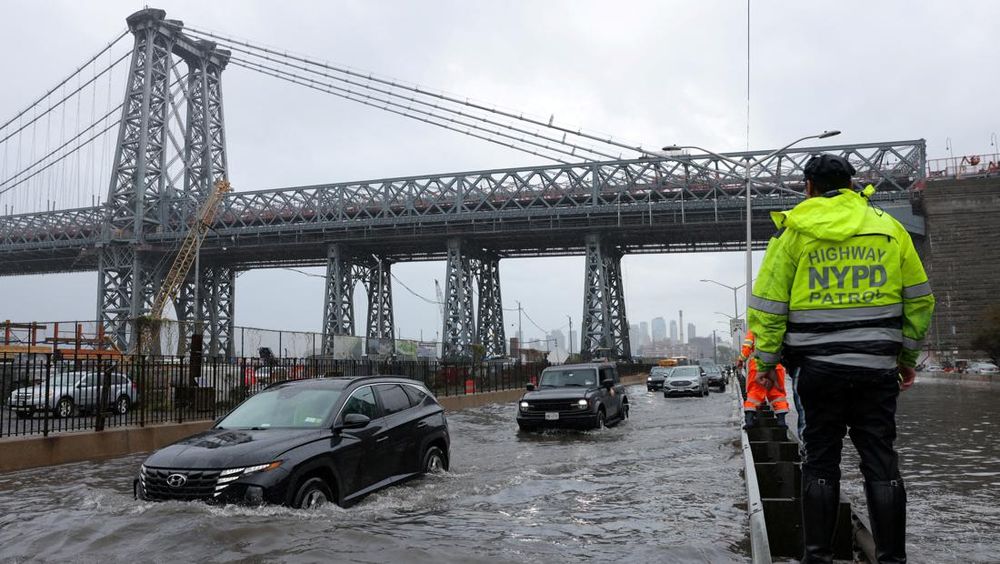PROGRES.ID – Flash floods struck New York, the United States, on Friday (9/29/2023) local time, after heavy rain poured over the city for a full week. The impact has been devastating, with disruptions to subway services, ground-floor apartments flooded, and some streets turning into “small lakes.”
New York Governor Kathy Hochul quickly declared an official state of emergency for the city, which has a population of around 8.5 million people and densely populated suburban areas.
The National Weather Service warned of flooding until Friday night, with rainfall reaching 5.1 cm per hour. Predictions indicated that the total accumulation of rain on Friday could reach 18 cm, with the potential for flash floods in urban areas and inadequate drainage systems.
The New York City subway, one of the world’s largest systems with 420 stations and over 30 lines, was one of the major casualties of the floods. Water flowed down the stairs and even through the ceilings of several stations, resulting in the closure of multiple lines and stations.
Vehicles were also stranded on flooded streets, while subway stations filled with water disrupted the journeys of millions of passengers. Bus passengers also felt the impact, with some routes slowing down, causing passengers to be trapped for hours.
At Grand Central Terminal, located in the heart of Manhattan, a 63-year-old retiree named Sue Evangelista had to wait five hours for the subway to take her and her husband to Connecticut. However, the train was canceled, leaving them and thousands of others stranded in the suburbs.
New York City Mayor Eric Adams has urged residents not to leave their homes because roads are blocked, and subway stations are flooded.
“Drive carefully, and if you can, stay home. Some of our subway stations are already flooded, and movement around the city is very limited,” Adams said, as reported by Channel News Asia, Saturday (9/30/2023).
Some residents complained about the government’s lack of anticipation for annual disasters like this. However, New York City Environmental Protection Commissioner Rohit Aggarwala explained that global warming has progressed faster than the city’s infrastructure can cope with.
“These weather pattern changes are a direct consequence of climate change. And unfortunately, the reality is that our climate is changing faster than our infrastructure can keep up with,” Aggarwala said.
This heavy rain is one of the highest ever recorded in New York in September, with rainfall reaching 34.9 centimeters in the month starting at 11 a.m. on Friday, and there is still the potential for further rain, according to Dominic Ramunni, a weather forecaster from the National Weather Service. The highest recorded rainfall in September was 42.72 cm in 1882.
Last Friday’s flash floods occurred after heavy rain and strong winds triggered by the remnants of Tropical Storm Ophelia. This storm had caused flooding in New York City and widespread power outages in North Carolina, Virginia, Pennsylvania, and New Jersey.
This event serves as a strong reminder of the importance of planning and adapting to increasingly extreme climate changes and preparedness for natural disasters that can occur at any time.








